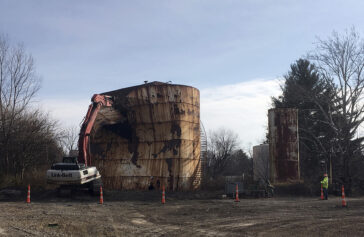Dec. 08, 2017
Best of the Week — First Winner
AP reveals how dirty US fuel byproduct contributes to India’s dangerously polluted air
Oil extracted from the tar sands of Canada has contributed to booming production among American refineries, but it also has created a messy legacy: Ton upon ton of a filthy byproduct called petroleum coke. U.S. utilities don’t want it because of its extremely high sulfur content, leaving refineries with one option – getting rid of it – because stockpiling had stirred community outcries. Tammy Webber, a Chicago-based reporter with the environmental beat team, wondered: If refineries couldn’t offload the substance in the U.S., what were they doing with it?
Through a year’s worth of detective work, Webber and her beat team colleague in New Delhi, Katy Daigle, traced the shadowy network that trades in oil refineries' bottom-of-the-barrel leftovers. They found that India was the leading destination of “petcoke” from the U.S., and Indian officials had no idea the amount of petcoke flowing into the country was 20 times more than just six years before. Nor did they know how it was being used in a country already choking on some of the world’s dirtiest air.
Within 24 hours of the story hitting the wire, India’s government announced it would phase out imports of petcoke and had begun working on a policy to end the practice.
For revealing the secretive transport of petroleum coke from the U.S. to one of the world’s most polluted countries, and for drawing an immediate reaction from the government of India, Webber and Daigle win this week’s Beat of the Week.














